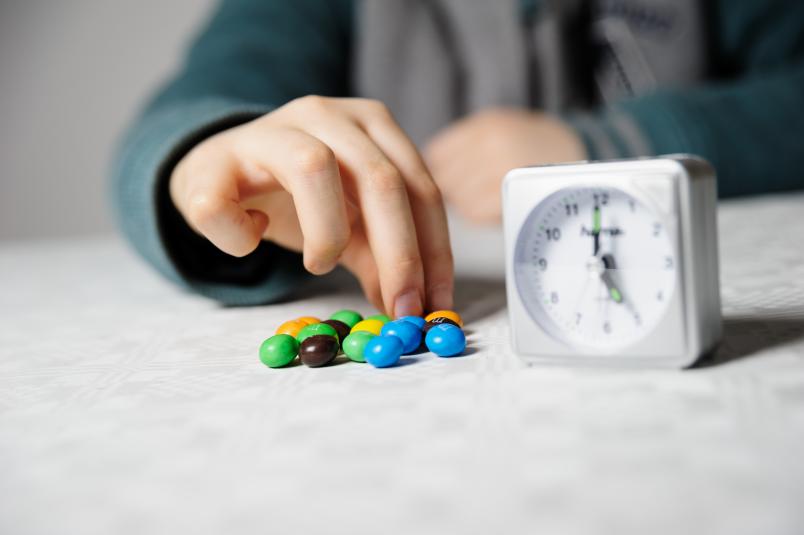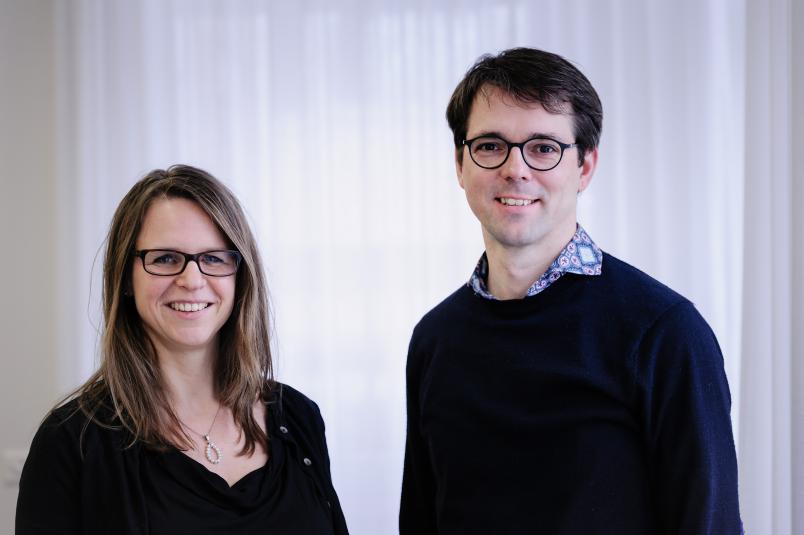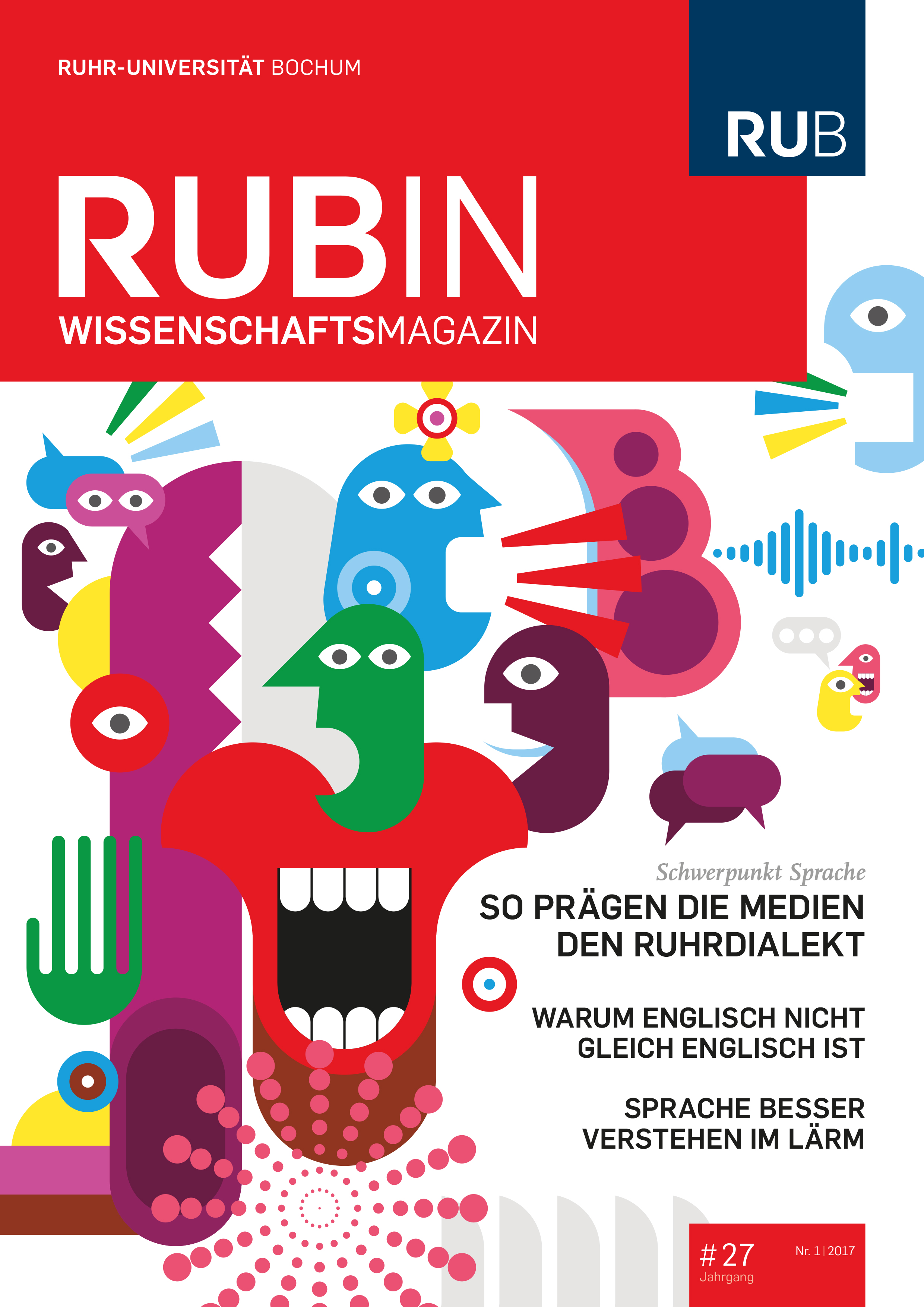ADHD
Some children suffer twice or three times as much
Researchers at the university clinic in Hamm are studying the attention deficit disorder ADHD in depth. In the course of a study, correlations to other chronic diseases in children have been emerging.
“Your child suffers from ADHD.” Parents who hear this diagnosis react in many different ways. Some are relieved. Here’s an explanation for their child’s behavioural problems at last. They finally know where they stand and hope that the situation can be improved through therapy measures. Others, however, worry that their son or daughter might become stigmatised. How will the teachers react? Should we better keep the diagnosis to ourselves?

Prof Dr Martin Holtmann and Prof Dr Tanja Legenbauer know all about the families’ hopes and fears. Each year, the child psychiatrist and the psychologist treat approx. 500 children and adolescents with ADHD, i.e. attention deficit hyperactivity disorder, at the university clinic of Landschaftsverband Westfalen-Lippe (LWL) in Hamm. It is the largest psychiatric hospital of its kind in Germany and belongs to the clinic network affiliated with Ruhr-Universität Bochum. ADHD is only one of the psychological disorders in children and teenagers of both sexes that are treated there.

Most families who contact Tanja Legenbauer and Martin Holtmann for the purpose of ADHD treatment had received a diagnosis from their paediatrician and are seeking a second opinion at the clinic. “Diagnosing the disorder is highly time-consuming task,” explains Tanja Legenbauer. “It’s not enough to simply take a look at the child. Attention deficit or anxiety can have causes other than ADHD.” This is why it’s important to talk to the teachers and to observe the child in different situations before making the diagnosis. Most paediatricians don’t have enough time to do that.
In addition to clinical work, both RUB researchers are also involved in research into ADHD. Therefore, they took part in the project “Neue Volkskrankheiten im Kinder- und Jugendalter” (Niki, “new childhood and adolescence epidemics”) that ran from late 2013 to late 2016 and was funded by the Ministry of Innovation, Science and Research of North Rhine-Westphalia. Paediatricians and child psychiatrists from four clinics in the Ruhr area were involved in it. Together, they investigated if and in what way the three disorders obesity, ADHD and allergies, specifically neurodermatitis and asthma, are linked.
At least 25 per cent of all children and adolescents in Germany are affected by at least one of these chronic diseases. Often, a child suffers from two or three of them at the same time. The final evaluation of the project, which will be performed by Netzwerk für Gesundheitswirtschaft “Medecon Ruhr”, had not been completed at the time of going to press. Nevertheless, some early conclusions can be drawn from the results gathered by Tanja Legenbauer and Martin Holtmann with respect to ADHD.

Thorough diagnostic investigation was performed on the study participants who came to Hamm – children between six and twelve years of age with suspected ADHD. In addition to the usual anamnesis interviews and interviews with teachers, it also included various surveys, for example regarding the child’s living situation or health-related quality of life.
The doctors also analysed the patients’ blood and performed experiments in order to measure how impulsive the children are. “Impulsivity means that a person doesn’t think things through before acting. ADHD children tend to be more impulsive than other children. Therefore, they sometimes appear clumsy and injure themselves more often than others,” as Martin Holtmann explains the reasons why the researchers were interested in this particular aspect.
The myth of the skinny fidget
One of the performed tests was the marshmallow experiment, developed in the 1970s and frequently applied in other contexts as well: a child is given the choice if he or she wants to eat a large portion of sweets immediately or prefers to leave them alone and be given a larger portion after a certain period of time.
ADHD patients found waiting difficult. Holtmann believes this aspect correlates with another disorder researched in the course of the study, namely obesity: “A person who is able to wait can regulate himself or herself,” says the child psychiatrist. “We know that children who lack this ability are often unable to eat in moderation and consume more food than necessary.”

The data show that, contrary to the commonly held view, children suffering from ADHD are by no means fidgety and skinny. On average, they weigh more than healthy children in the same age bracket. The Hamm-based physicians intend to study the correlation between the attention deficit disorder and obesity in greater detail in future.
In the course of the study, the researchers investigated another hypothesis: it seems that patients in all three groups have on average more trouble sleeping. This might include an inability to fall asleep, or waking up repeatedly, thus reducing the total period of sleep.
Striving to get to the bottom of this, Tanja Legenbauer and Martin Holtmann analysed an additional, even larger dataset with respect to this research question. That dataset has been comprised for the “German Health Interview and Examination Survey for Children and Adolescents” (Kiggs), a long-term study run by the Robert Koch Institute since 2003.
[einzelbild:5]
The evaluation has revealed that the sleeping pattern of children was worse if they suffered from ADHD alone, as well as if they additionally presented obesity or neurodermatitis. In case of the latter, the explanation why the children don’t get much sleep seems quite simple: the itchiness wakes them up.
In case of obesity and ADHD, the researchers can only speculate: “Children suffering from psychological pressure tend to sleep worse,” says Tanja Legenbauer. “But it is not clear which is the cause and which the effect. People under psychological stress are less likely to unwind at night, as everyone knows from experience. And a person who didn’t sleep well will suffer the consequences the next day and will find it more difficult to concentrate. Both are mutually reinforcing.”
Moreover, anyone who slept badly prefers to be left alone during the day, rather than doing any physical activity, which in turn might exacerbate overweight problems. Plus: someone who stays up longer at night has more opportunities to eat, thus extending their calories intake.

ADHD is not an invention of the pharmaceutical industry.
Martin Holtmann
Martin Holtmann considers the Niki study to offer a real chance and a sustainable approach: “Thanks to the project we have become more aware of the fact that many children suffer from multiple disorders simultaneously. In future, we intend to choose a holistic approach to our patients and to take diseases into account that are being treated by other specialists.”
In the context of ADHD, he wants to make one thing clear: “ADHD is a real disorder and certainly not an invention of the pharmaceutical industry or an excuse for parents who find it difficult to manage the behaviour of their child,” says the child psychiatrist. Unlike the other two diseases researched in the study, no increase of ADHD patients has been observed in the population. “Children with ADHD have always existed. In the past, there was no appropriate diagnosis, which is why the disorder was not as visible as it is today.”



